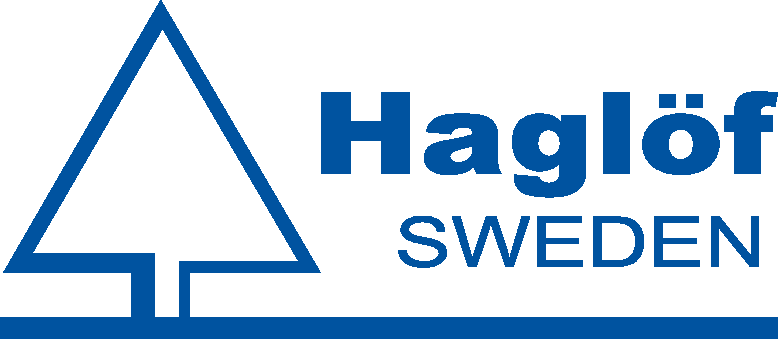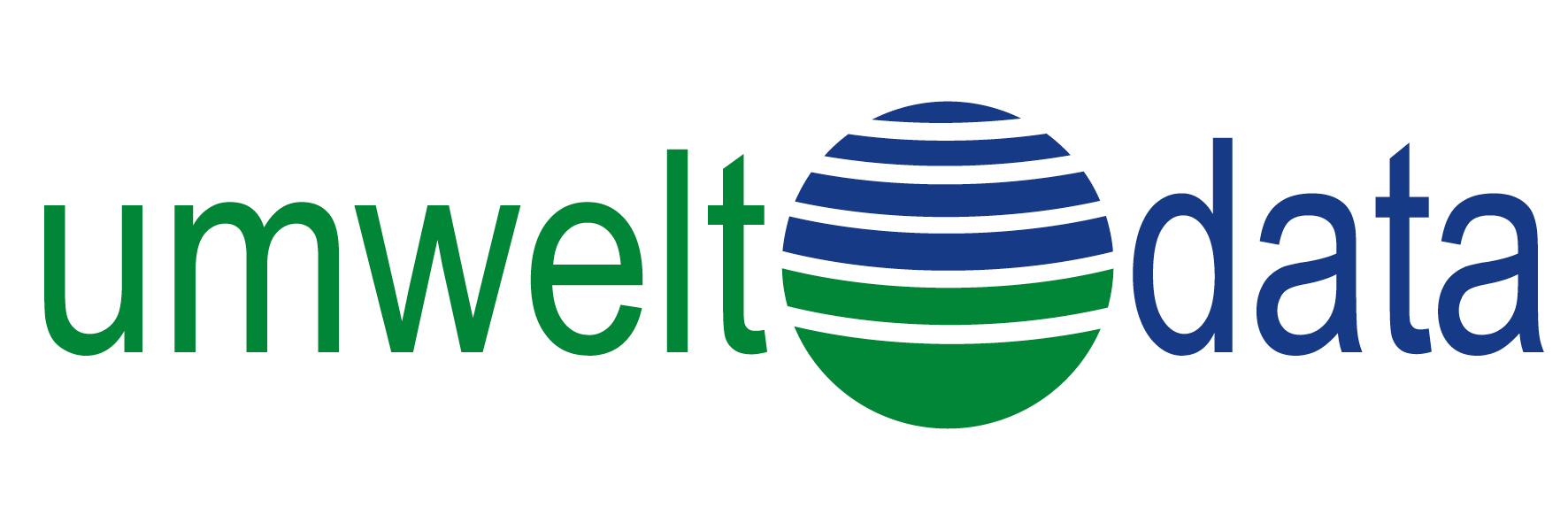
Program overview and some stats
Johannes Breidenbach
Wrap up
Rasmus Astrup
We are honored to receive financial support from the following organizations:
 |
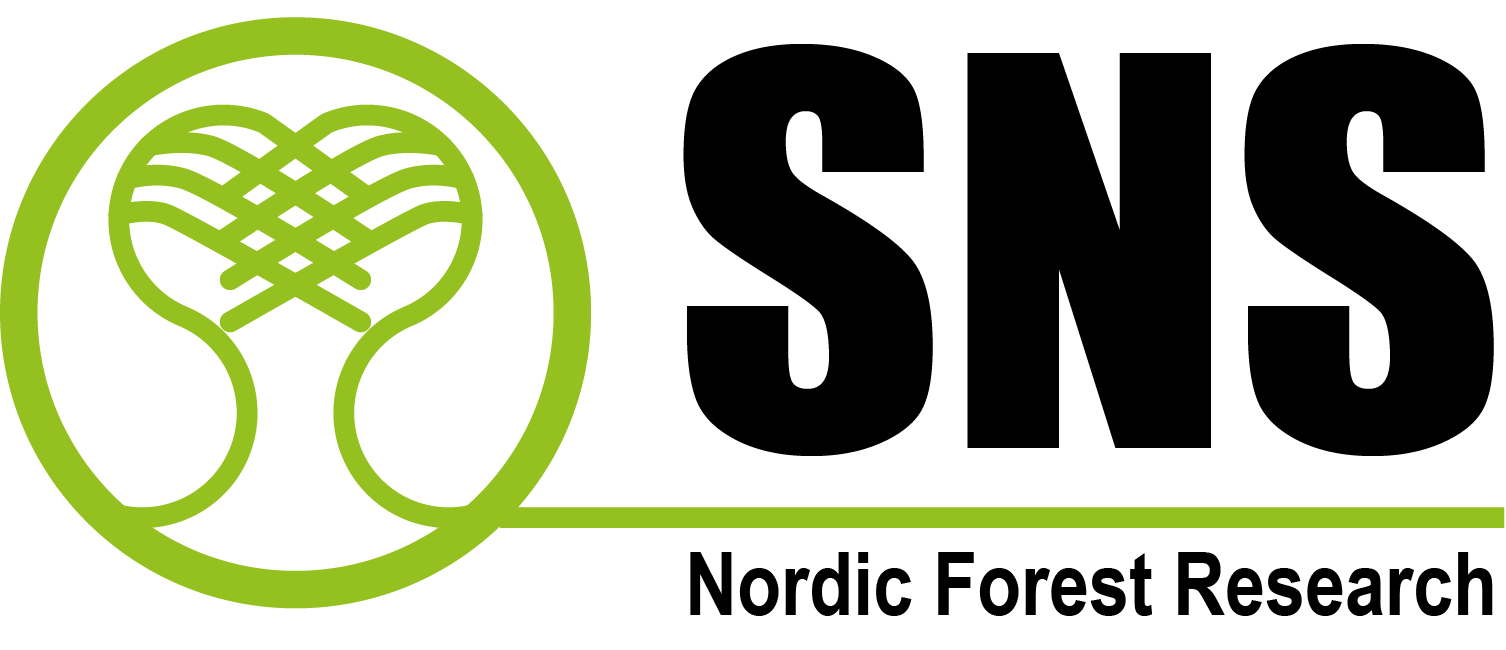 |
|
Nordic Forest Research (SNS) supports the conference via the CARISMA network (https://www.nibio.no/en/projects/carisma) and via a direct grant.
Sponsors
| Silver sponsor | Silver sponsor | Exhibitor | Supporter | ||||
|
|
|
|
|
|
|
|
A “special issue” (called “Thematic series”) will be published in the Springer-journal Forest Ecosystems:
https://forestecosyst.springeropen.com/national-forest-inventories---ppf
Forest Ecosystems publishes research that is exciting and fresh. Each study needs to be placed in a broader context. Results that are generalizable, and findings that add substantial knowledge and are of interest to a broad audience are particularly welcome. Authors should give specific reasons why the research is important. For example, the research could affect a particular method, it could have a bearing on a specific policy discussion, or it could change a conventional theory or belief. The guest editors aim at balancing the topics of the publications such that they reflect the themes presented at the conference. Otherwise good manuscripts may have to be rejected because of this and we hope for your understanding regarding this matter.
The call for the thematic series is now open with a deadline for submission until 31 December 2019. We especially encourage authors with an accepted oral presentation to submit their manuscripts. The thematic series is, however, also open also for other authors.
We are very grateful that the publication costs for all articles accepted for publication in the thematic series will be waived by Beijing Forestry University.
About the Norwegian NFI
Some people can't see the forest for the trees, but some guys are different. For 100 years these Norwegians have explored remote woodlands to produce knowledge about the forest resources. May 19th-23rd the sylvan centenarian will be celebrated with a large scientific conference just outside Oslo. https://vimeo.com/252322912
Background and aims
In 2019, it is 100 years ago since the first National Forest Inventory (NFI) was established in Norway. The establishment of the NFI in 1919 was motivated by a fear of over-exploitation of timber resources. Just a few years later – in the 1920’s - similar monitoring programs were to follow in Finland, Sweden and the USA. Later, debates on acid rain in the 1980’s were a trigger for initiating NFI’s in central Europe. In the recent years, climate change (REDD+) has triggered the establishment of new NFI’s, especially in developing countries while most developed countries now have regular NFI programs.
One hundred years ago, the primary motivation of establishing NFI’s was to obtain an overview of timber resources. Since then, NFI’s have gradually evolved to provide answers to a much broader range of issues. While monitoring timber resources and sustainability is still a major component, NFI’s today also monitor forest damage, carbon sequestration as well as biodiversity indices and many other ecosystem services of landscapes in general. Currently, NFI’s provides data vital to decision support at national, regional and even local scales, to international reporting under the Climate Convention, and to international forest health monitoring programs. In line with the widening of objectives during the past century, techniques, sampling designs and resources in the NFI’s have evolved to be able to provide relevant answers to the society.
We would now like to take this unique opportunity to celebrate the first 100 years of history of the NFI’s by bringing together researchers and practitioners with an interest in forest monitoring, to reflect on the passed challenges, the lessons learned, and to improve future large-scale forest and landscape inventory programs.
Important dates
Deadline for submission of abstracts for oral presentations and posters: 14 October 2018
Notification of abstract acceptance: 15 December 2018
Registration (early-bird discount): NOK 2000,- 1 September until 31 December 2018
Registration (after 31 December 2018): NOK 3000,- until 28 February 2019
Registration (after 28 February 2019): NOK 4000,-
Scientific Committee (SC)
Johannes Breidenbach, NIBIO, Norway (Head of SC)
Annika Kangas, LUKE, Finland
Thomas Nord-Larsen, UCPH, Denmark
Mats Nilsson, SLU, Sweden
Ron McRoberts, USFS, USA
Klemens Schadauer, BFW/ENFIN, Austria
Rasmus Astrup, NIBIO, Norway
Thomas Riedel, Thünen, Germany
Adrian Lanz, WSL, Switzerland
Aksel Granhus, NIBIO, Norway
Håkan Olsson, SLU, Sweden
Jonas Fridman, SLU, Sweden
Anssi Pekkarinen, FAO/FRA, International
Erik Næsset, NMBU, Norway
Clara Antón Fernández, NIBIO, Norway
Matti Maltamo, UEF, Finland
Kari Korhonen, LUKE, Finland
Gerald Kändler, FVA, Germany
Piermaria Corona, CREA, Italy
Gretchen Moisen, USFS, USA
Lars Waser, WSL, Switzerland
Steen Magnussen, CFS, Canada
Iciar Alberdi, INIA, Spain
Radim Adolt, UHUL, Czech Republic
Hans Andersen, USFS, USA
Organizing commitee (OC)
Aksel Granhus, NIBIO (Head of OC)
Johannes Breidenbach, NIBIO
Stefano Puliti, NIBIO
Gro Hylen, NIBIO
Knut-Ole Viken, NIBIO
Marius Hauglin, NIBIO
Clara Anton Fernandez, NIBIO
Ellen Schei Pongo, NIBIO
Erling Fløistad, NIBIO
Code of conduct
Funding
The following organizations support conference activities:
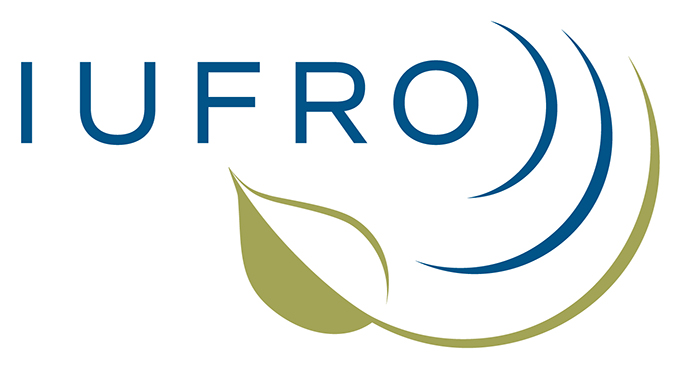 |
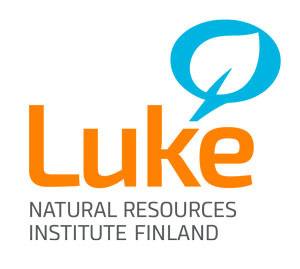 |
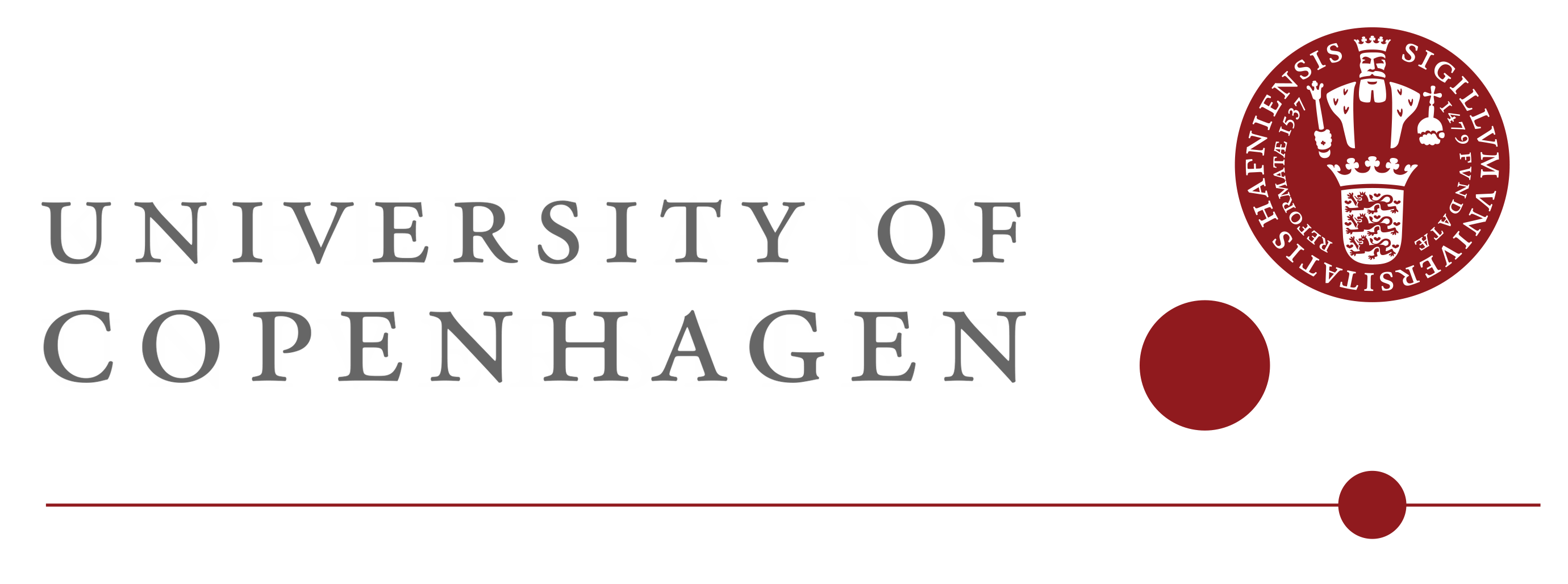 |
 |
 |

Registration fees and hotel costs
Every participant will have to pay a registration fee of NOK 3000,- until 28.02.19 for the conference and NOK 500,- if joining the field trip. The registration fee includes conference materials, the icebreaker and the gala dinner (if staying at the hotel). The registration fee for the field trip includes transportation and lunch. The registration fee has to be paid upon registration on this website.
For every conference day (Monday through Wednesday), an additional fee of NOK 600,- will have to be paid when arriving at the venue. This fee includes refreshments, lunch, and conference services. If you stay at the conference hotel, it also includes the dinner. The hotel is very nice and we got a good offer for room prices which are NOK 1090,- for a single room or NOK 690,- per person for a double room (including breakfast). If you do not stay at the hotel, there will be an additional cost (NOK 890,-) if you would like to join the gala dinner and the normal dinners at the hotel are not included. The room and the other fees described in this paragraph will be paid directly to the hotel when arriving.
Example 1: You participate in the full conference including the field trip; you arrive Sunday afternoon and leave Thursday evening and stay in a single room. The cost will be NOK 3500 (which has to be paid on this website) and 4 x NOK 1090,- plus 3 x NOK 600 = NOK 6160 (which has to be paid at the hotel).
Example 2: You participate in one conference day only; you arrive Sunday afternoon and leave Monday evening and stay in a single room. The cost will be NOK 3000 (which has to be paid on this website) and 1 x NOK 1090,- plus 1 x NOK 600 = NOK 1690 (which has to be paid at the hotel).
Please contact us, if you like to bring an additional person that does not participate in the conference of if you have any other questions.
Registration form
Refunding is possible until February 18th, after this date the hotel room has to be paid also if the conference is not attended.
Information
This activity has ended, and it is no longer possible to register.

-
Sunday 19th May:
-
18.00
Registration
-
19.00
Icebreaker, poster display and company exhibition
-
-
Monday 20th May: Improving future NFIs by learning from the past
-
07.45
Registration
-
08.15
Welcome
Introduction
by/ Aksel Granhus, NFI NIBIOConference overview, and some statistics
by/ Johannes Breidenbach, NFI NIBIOLong-term forest research and monitoring to support sustainable development
by/ Nils Vagstad , Director of NIBIO -
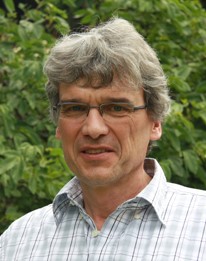 09.00
09.00National level forest inventories - of rigour and relevance at the science-policy interface
Co-chair: Gerard Kändler and Gro Hylen
Christoph Kleinn is a professor at University of Göttingen, Germany, where he leads the Forest Inventory and Remote Sensing team in the Faculty of Forest Sciences and Forest Ecology (http://www.iww.forst.uni-goettingen.de/iww-eng.htm). His main research interest is in large area forest monitoring both in technical and strategic terms, and from a science and implementation point of view. Among the foci of his work is also to make young forestry students enthusiastic about these fields, by organizing international student workshops.
-
09.45
History
100 years of NFI in Norway
by Aksel GranhusNFI in the USA: Development of the Forest Inventory and Analysis (FIA) Program
by Richard W. Guldin -
10.30
Break, poster display and company exhibition
-
11.00
Kaleidoscope
Co-chair: Adrian Lanz and Annika Kangas
Bridging the gap: toward a French MS-NFI for territories
by Jean-Pierre RenaudReflections from 35 years of National Forest Inventory in Germany: Challenges and lessons learned
by Heino Polley, Thomas RiedelThe role of NFI sample plots and multi-temporal remote sensing for keeping forest management plans continuously updated
by Håkan OlssonUsing Drone-based in situ data for estimating timber volume - a comparison with a field-based approach
by Stefano Puliti -
12.00
Lightning talks I
The French NFI : flexibility at the heart of the design
by François MorneauUsing data from the Swiss National Forest Inventory to assess the economic efficiency of the Swiss forest road network
by Marielle FraefelNational Forest Inventory planning in Myanmar (Burma): Learning from past and present experiences and developing a demand driven NFI approach with a view on long term sustainability
by Franz – Eugen ArnoldHalf-century Development of National Forest Inventory in Lithuania
by Andrius KuliešisUsing consecutive National Forest Inventories to validate StandsSIM regional forest simulator – a Portuguese application
by Susana BarreiroManagement and economic potential of private forests at national level – Croatia case study
by Karlo Beljan -
12.30
Lunch
-
 13.30
13.30Use of auxiliary information in NFIs
Co-chair: Andreas Hill and Thomas Riedel
Göran Ståhl is professor of forest inventory at the Swedish University of Agricultural Sciences, Umeå, Sweden. His research interests are environmental monitoring, forest inventory and forest planning. During 1999-2008 he was chairman of the board of the Swedish NFI and he has coordinated the development of programmes for Swedish landscape monitoring and for LULUCF sector reporting according to the climate convention. [Abstract]
-
14.15
Inference
Small area estimation in the Norwegian NFI
by Johannes BreidenbachA small area estimation tool for FIA applications
by Gretchen MoisenUsing airborne and satellite remote sensing to support forest inventory in interior Alaska
by Hans-Erik AndersenUsefulness of past inventory data as prior information in the future inventory
by Annika Kangas -
15.30
Break, poster display and company exhibition
-
 16.00
16.00Special session by Erkki Tomppo: Multisource NFIs in the next decade – foundations for the way forward
Co-chair: Erik Næsset and Rasmus Astrup
Field plots and RS technologies - a common future for NFIs?
by Klemens SchadauerA primer on model-based inference for remote sensing-assisted forestry applications
by Ron McRobertsRemote sensing aided forest inventories - past, present, future
by Erkki Tomppo -
17.30
Lightning talks 2
Tree species proportions and site index as an error source in forest management planning
by Arto Haara, Annika KangasRevisiting the main attributes of Polish forests
by Marek Jabłoński, Bożydar NerojPost-stratification based on satellite imagery for downscaling information on forest resources
by Helena HaakanaVariance estimation of total growing stock volume in spatially balanced national forest inventory sampling
by Minna RätyStanding volume and assortment estimation based on stem shape measurement and stem quality assessment
by Martin ČernýComparison of photogrammetric canopy models from archived and made-to-order aerial imagery in forest inventory
by Sakari TuominenA large-scale forest dynamic model to estimate wood resources in the French forests based on NFI information
by Audinot Timothée -
18.00
Poster session and company exhibition
-
19.00
Dinner
-
20.15
A systematic night
Co-chair: Svetlana Saarela and Ron McRoberts
In search of a robust variance estimator for systematic sampling in forest inventories
by Steen MagnussenLocal difference estimators of variance in systematic sampling
by Juha HeikkinenEvaluation of the new sampling strategy for the Swedish national forest inventory
by Anton Grafström -
-
Tuesday 21st May: NFIs today and in the future
-
07.45
Registration
-
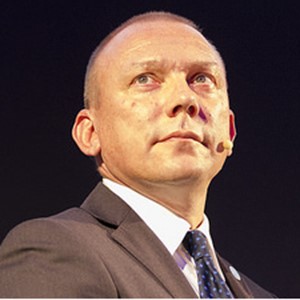 08.30
08.30Importance of NFIs in the international context
Co-chair: Alexandra Freudenschuss and Stein Tomter
Anssi Pekkarinen works for the Food and Agriculture Organization of the United Nations, where he leads the Global Forest Resources Assessment team. His main interest is to develop global capacity in forest monitoring and assessment to allow streamlined, transparent and reliable reporting on forest resources. (Abstract)
-
09.15
The value of international cooperation
SAR DEM differencing for biomass estimation - potential for global applications
by Svein SolbergEFISCEN Space – a high-resolution, empirically-based forest simulator for Europe
by Mart-Jan SchelhaasHarmonisation of stem volume estimates in European NFIs
by Thomas GschwantnerThe GFBI data center: Global-level integration of national and local forest inventories using BigData technology and advanced computing
by Sergio de MiguelKey project outcomes of the H2020 project DIABOLO
by Markus Lier -
10.30
Break, poster display and company exhibition
-
11.00
Ecosystem services and policy
Co-chair: Sara Franceschi and Klemens Schadauer
Using National Forest Inventory Data to Assess Ecosystem Service Levels on Public and Private Ownerships
by Dr. Donald G. HodgesIntegrating the risk of natural disturbances in forest management using NFI data
by Olalla Díaz-YáñezNFI data – a proper source for policy analysis of future forest management?
by Ljusk Ola ErikssonEffect of forest management practices on forest biodiversity – analyses with NFI data
by Kari T. Korhonen -
12.00
Lightning talks
Using National Forest Inventory Data to Model Changes in Tree Species Diversity in the Southern United States
by Andrew J. HartsellTrade-offs and synergies between preventing disturbances and the provision of ecosystem services in Swiss forests
by Christian TemperliCharacterisation of forest types in Iberian Peninsula
by Francisco Castro RegoTwo-phase estimation of wood productivity of poplar plantations in northern Italy exploiting Sentinel-2 data as auxiliary information
by Agnese Marcelli & Piermaria CoronaDefining near-optimal harvesting techniques using Swiss National Forest Inventory data
by Christoph FischerPredicting tree growth from a wide range of variables including climate and species mixing effects
by Brigitte RohnerModels of coarse woody debris dynamics based on the Finnish, Norwegian and Swedish NFI data
by Tuomas AakalaUse of sample cores collected in Romanian National Forest Inventory on forest trees growth study
by Gheorghe Marin -
12.30
Lunch
-
 13.30
13.30From NFI statistics to policy – What users need for climate reporting and MRV
Co-chair: Esther Thürig and Aksel Granhus
Ellen Bruzelius Backer is the Policy Director for Environmental Integrity at Norway's International Climate and Forest Initiative (https://www.regjeringen.no/no/tema/klima-og-miljo/klima/klima--og-skogsatsingen/id2000712/ ).
She is a political scientist and has worked with forest policy issues and measuring, reporting and verification (MRV) for both Norway and for tropical forest countries engaged in REDD+. (Abstract)
-
14.15
Carbon and mitigation
Standing volume, dead wood and carbon dynamics in coniferous stands older than logging maturity age
by Jogeir N. StoklandSimulation of Forest Reference Level under current management practice – A Suisse case study for the Greenhouse Gas Inventory
by Esther ThürigContinuous NFI as a monitoring system of CC impacts onto forest growth : an exploratory analysis on coniferous tree species in France
by Clementine OlsUsing NFI-data and the Heureka system for evaluating the bioenergy potential in Swedish forests
by Karin Öhman -
15.30
Break, poster display and company exhibition
-
 16.00
16.00Are NFIs ready for ecosystem services assessment?
Co-chair: Iciar Alberdi and Thomas Nord-Larsen
Gherardo Chirici is Associate Professor at the University of Florence (Italy), chair of Forest inventory and remote sensing, director of geoLAB – Laboratory of Forest Geomatics (www.geolab.unifi.it). His main research interests are forest geomatics and inventory, application of remote sensing for landscape ecology and biodiversity monitoring, multiscale land planning, forest modelling and sustainable forest management. (Abstract)
-
16.45
Ecosystem services
Remote sensing based mapping and monitoring of natural forests in Norway
by Hans Ole ØrkaLinking NFI to the sustainable urban development agenda – a new perspective for NFI reporting
by Christoph Fischer (Anders Busse Nielsen)Dead wood patterns in Mediterranean forests
by Iciar Alberdi -
17.30
Lightning talks
Biomass ratio varies along geographic gradients and forest stands composition: an analysis based on wood density data collected by the French NFI
by Baptiste KerfridenQuantification of Phenological Observations of Tree Crowns with UAV-based Multispectral Imagery
by Stuart KrauseToward a complete C balance of forests for GHG inventories – data requirements for National Forest Inventories
by Markus DidionComparison of various approaches of forest carbon estimation using National Forest Inventory data from Poland
by Karol BroniszMore than forest – monitoring amenity values in the Danish NFI
by Thomas Nord-Larsen (Frank Søndergaard Jensen)How much can airborne laser scanning based forest inventory by tree species benefit from auxiliary optical data?
by Lauri KorhonenThe influence of outliers in image matching point clouds on estimating canopy height models and growing stock estimations
by Christian AufreiterEffects of truncating the angle count sampling method on the proceedings of the Austrian NFI
by Ambros Berger -
18.00
Poster session and company exhibition
-
19.00
Conference dinner
Co-chair: Marius Hauglin
kl 20.15 The difference between knowing and not knowing
by Thomas Nord-Larsen -
-
Wednesday 22nd May: Cutting edge and futuristic inventory techniques and technologies
-
07.45
Registration
-
 08.30
08.30NASA Earth observation programs and NFIs – how can we achieve synergies?
Co-chair: Lars T. Waser and Helena Haakana
Laura Duncanson has recently started a position as an assistant professor at the University of Maryland College Park, after spending four years as a research scientist at NASA Goddard Space Flight Center. Her primarily research focus is studying forest structure, both from theoretical and applied perspectives, with particular interests in allometry and biomass mapping and modeling. She is a member of the NASA GEDI science definition team, and works to develop and implement GEDI’s aboveground biomass algorithms. She is also co-lead of the Committee for Earth Observing Satellites (CEOS) Land Product Validation (LPV) focus area on biomass, and is engaged with members of NASA’s ICESat-2, NASA/ISRO’s NISAR, and ESA’s BIOMASS mission to work toward coordinated spaceborne product validation. (Abstract)
-
09.15
Remote sensing based countrywide wide NFI products - nice to have or must haves?
Remote sensing based countrywide NFI products – must-haves or nice-to-haves?
by Lars T. WaserThe Norwegian forest resource map SR16
by Marius HauglinA new Swedish forest attribute map predicted using 3D data from aerial images and field data from the National Forest Inventory
by Jörgen Wallerman (Mats Nilsson)Mapping of potentials for biodiversity - ecosystem services at multiple scales
by Vivian Kvist JohannsenEstimating forest stock age using NFI field data and National Land Survey airborne laser scanning data of Finland
by Matti Maltamo -
10.45
Break, poster display and company exhibition
-
11.15
Proximal sensing
Co-chair: Stefano Puliti and Nataliia Rehush
XDM project, a new method for improving the quantification and mapping of the forest biomass
by Jean-Michel LebanIs There A Role for Terrestrial Laser Scanning in National Forest Inventories?
by Mark J. DuceyApplicability of terrestrial photogrammetry based on Structure from Motion for deriving plot-level forest parameters
by Livia PiermatteiToward the development of total volume and biomass functions using terrestrial lidar and NFI data
by Olivier Bouriaud (Cédric Vega)UAS-LiDAR supported forest inventories: Possibilities and limitations
by Hollaus Markus -
12.30
Lunch
-
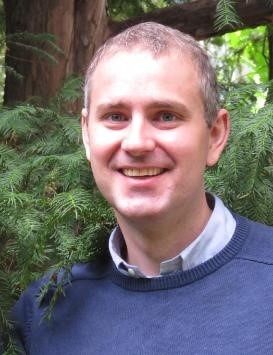 13.30
13.30Mutualisms between Forest Monitoring and Forest Inventory
Co-chair: Minna Räty and Mark J. Ducey
Arne Nothdurft is Professor for Forest Monitoring and head of the Institute of Forest Growth at the University of Natural Resources and Life Sciences, Vienna (BOKU).
His research focuses on spatial and temporal modeling of stochastic processes in forest ecosystems. Major goal of his work is to assess the impact of a changing environment on the growth and mortality of forest trees. (Abstract)
-
14.15
Inference
Spatial analysis of airborne laser scanning point clouds for predicting forest variables
by Mari MyllymäkiUtilizing remote sensing data in Germany’s national forest inventory
by Sebastian SchnellDesign-based mapping of forest resources from two-phase inventories
by Piermaria CoronaMixed-effects models to generalize sample tree height information: implications to national forest inventories
by Lauri MehtätaloHierarchical model-based inference for biomass assessment using a fusion of remotely sensed data
by Svetlana SaarelaScalable pan-Eurpean model-assisted biomass estimation
by Adrian Lanz -
15.45
Break, poster display and company exhibition
-
16.15
Modelling
Co-chair: Arne Nothdurft and Clara Anton-Fernandez
Norway's Forest Reference Level
by Clara Anton-FernandezDevelopment of Forest Reference Levels and National Forestry Accounting Plans: the Implications for Forest and Land Use Policy in Lithuania
by Gintaras KulbokasUsing the 3PG model to project forest dynamics under different scenarios. An application to the Portuguese production forest using NFI data as input
by Margarida ToméWhat data accuracy suffices for stand management decisions?
by Jari VauhkonenModelling ingrowth for empirical forest prediction systems
by Jürgen ZellA Monte Carlo simulation approach to estimate historical forest-related GHG emissions in Fiji
by Philip MundhenkEffects of different Swiss NFI sampling designs regarding tree regeneration on assessing ungulate browsing
by Andrea D. Kupferschmid -
18.00
Wrap up
Co-chair: Rasmus Astrup
-
19.00
Dinner
-
-
Posters:
Analysing the reproducibility of Swiss NFI field survey measurements
by Berthold TraubHarmonisation of NFI information to characterize the vertical structure of forest fuels at the European scale
by Leónia NunesUsing radio positioning for mapping trees on sample plots
by Pekka SavolainenDeadwood dynamics – a bayesian approach for turnover estimation
by Markus DidionNational Forest Inventory Design in Poland
by Andrzej Talarczyk, Stanisław Zajączkowski, Longina Sobolewska, Bożydar NerojRegional Harvest, Stocking, and Sustainability in a Complex Forest: What Can We Learn from NFI Data?
by Mark J. DuceyA flexible technology solution for multiple NFI programmes
by Martin ČernýEffective forest inventories in small private forests - identifying and describing climate sensitive forest stands
by Matthias Dees, Johannes RahlfApplication of bio-geophysical methods in precise forestry
by Robert MajewskiForest Resources Monitoring using Permanent Sample Plots from the National Forest Inventory in South Korea
by Jongsu YimIntegration of Small Area Estimation in Forest Management Planning
by Andreas HillTerrestrial Laser Scanning for Assessing Ecologically Relevant Stem Structures
by Nataliia RehushUsing TLS data for volumetric modelling – experiences from Finland
by Timo P. PitkänenThe Swiss National Forest Inventory: statistics and mapping
by Adrian LanzThe effect of climate and topography on the spatial distribution of boreal peatland
by Jogeir N. StoklandA generic Markov chain model to simulate the development of forest resources observed by the NFIs
by Jari VauhkonenThe multi-objective Spanish National Forest Inventory
by Iciar AlberdiEvolution of data acquisition and information processing technology in Poland's NFI
by Andrzej Talarczyk, Longina Sobolewska -
Thursday 23rd May: Whole-day field excursion
During the field excursion day, crews from Norway, Sweden, Finland, Denmark and Iceland will demonstrate how specific measurements and assessments are done in the different Nordic NFI’s. The demonstrations will take place in the forest near Ringkollen, about half an hour with bus from the conference venue. Ringkollen belongs to the larger Krokskogen forest area (https://en.wikipedia.org/wiki/Krokskogen), and is a popular starting point for many recreational visitors, also during winter as the area offers excellent opportunities for cross-country skiing. The area is situated ca. 600 m a.s.l and is dominated by Norway spruce, but Scots pine and stands with birch admixed are also common.
The concept of the demonstrations will be that the participants on the excursion will be split into five groups, which will circulate between the different “country posts” according to a time schedule allowing for one hour per group and post. Themes to be covered will be e.g.:
- Visualization of inventory design, plot sizes etc.
- Methods for measurement of dead wood
- Assessment of growing stock and increment
- Assessment of biodiversity/ecological/value/other ecosystem services
- Assessment of need of silvicultural treatment and wood quality

Lunch will be served at the local Restaurant Ringkollstua, where we may enjoy a meal composed of local game (a vegetarian alternative will be provided).
There will also be the possibility to get more information about the products of the conference’ sponsors.
Link: http://www.fossenfriluft.no/ringkollstua.397248.no.html
The field trip will end at Sundvollen at 16:00 hours. One of our buses will go directly from Ringkollstua to the airport with an expected arrival time of 16.45. In addition, the normal airport shuttle (http://askeladden.net/airportshuttle/) will leave from Sundvollen at 16.05 and arrives according to plan at Oslo Gardermoen airport (OSL) at 17.45. Please note the registration desk, in case you intend to use any of the shuttles.
-
08.15
Departure from the hotel
-
12.30
Lunch at Ringkollstua
-
15.00
Departure from Ringkollstua

Call for abstracts
The scientific committee will review submitted abstracts and recommend them for oral or poster presentation:
- An (extended) abstract (max one page) is required for each paper submission
- Please download the template file for the abstracts here
- Use the template to write your abstract and send it to abstracts.nfi100@nibio.no
- A maximum of two abstract submissions per presenter
- A single presenter is allowed to present a maximum of two papers.
- Authors will be given the opportunity to have their paper(s) considered for a special issue of a peer‐ reviewed journal.
Deadline for submission of abstracts for oral presentations and posters: 14 october 2018
Location:
The conference venue is Sundvolden Hotel which is located close to the beautiful lake Tyrifjorden, northwest of Oslo. The hotel has an almost 400-year long history as accommodation for travelers, and provides modern conference facilities with a new conference hall and an adjacent large lobby suitable for poster sessions, exhibitions and mingling. The entire hotel will be at our disposal during the conference.

How to get there?
From Oslo airport (OSL):
Bus:
The airport shuttle bus service (http://askeladden.net/airportshuttle/) from Oslo airport to Sundvolden has several daily departures with a travel time of 1 h 10 min.
Note: When registering for the conference, please indicate whether you want to use the airport shuttle bus, as this gives us the opportunity to notify the shuttle bus company on needs to adjust the capacity. The shuttle costs NOK 300,- per person. Payment directly to the driver.
Train + bus:
You may also travel by train from the airport to Oslo Central Station, and proceed by taking bus route 200 from the main bus terminal in Oslo (5 min walk from the railway station) to Sundvolden E16. Approximate travel time 1 h 45 min. You can plan your trip here: www.ruter.no/en
Please do not hesitate to contact us if you have any questions.
Contact:

To book your sponsorship or exhibitor package today, please contact the organizing committee: nfi100@nibio.no or use https://nibio.pameldingssystem.no/payment
The sponsor exhibition and scientific posters will be in the same conference room to assure high visibility of all sponsors. The conference room will be next doors to the main auditorium.
We expect that this international conference will attract at least 250 experts in forest and landscape resource monitoring, with participation from research institutions, universities, government agencies and the private sector. Thus, if you want to present your company or organization to potential customers or stakeholders don’t miss this unique opportunity. A description of our sponsorship and exhibitor opportunities follows. Taking advantage of these opportunities will provide your company or organization with:
- Significant exposure to experts within the field of forest monitoring, remote sensing, and statistical modeling
- Networking opportunities during the conference, and after the conference through provision of an attendees list
- Opportunities to promote your company or organization’s products and services to prospective clients
- Recognition as an international leader in the field of data uses or equipment for forest monitoring and science
We are offering a variety of sponsorship and exhibitor opportunities that can be tailored to meet your needs. If you are interested, please contact us and we will be happy to help setting up a package that best suits your needs.
Platinum (NOK 100 000)
- Recognition as Platinum sponsor on all printed and digital conference materials (program, slides, website)
- One area for placement of an exhibit booth (ca. 3 x 3 m)
- One additional exhibit area (ca. 2 x 1.5 m) ) in a high-flow area near refreshment stations
- Complementary conference access for up to three representatives
- Company brochure or leaflets supplied to all conference attendees in registration packet
- Full page ad in conference program
- Recognition on signage (provided by company) as primary sponsor at conference dinner and icebreaker
- 10-minute slot for company presentation during conference (limited availability)
Gold (NOK 50 000)
- Recognition as Gold sponsor on all printed and digital conference materials (program, slides, website)
- One area for placement of an exhibit booth (ca. 3 x 3 m)
- Complementary conference access for up to two representatives
- Company brochure or leaflets supplied to all conference attendees in registration packet
- Half page ad in conference program
- Recognition on signage (provided by company) during icebreaker
Silver (NOK 25 000)
- Recognition as Silver sponsor on all printed and digital conference materials (program, slides, website)
- Complementary conference access for one representative
- Company brochure or leaflets supplied to all conference attendees in registration packet
- One area for placement of an exhibit booth (ca. 2 x 2 m)
Exhibitor (NOK 10 000)
- One area for placement of an exhibit booth (ca. 2 x 2 m)
- Complementary conference access for up to one representative
Supporters (NOK 5 000)
- Company Logo will be shown on website

